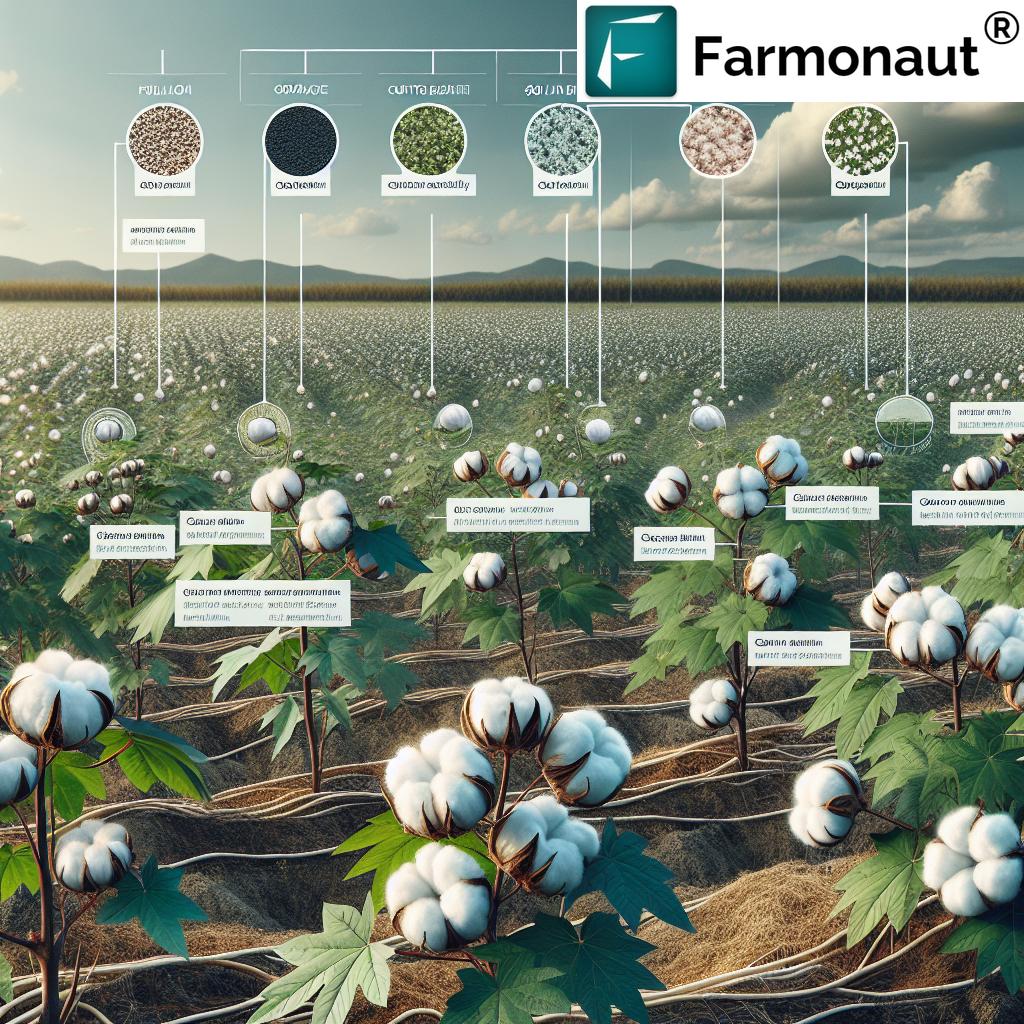|
“Up to 40% of coffee yield loss is linked to poor soil fertility management in estates worldwide.” |
Coffee Estate Management: 10 Powerful Sustainable Practices
Coffee estate management demands a thoughtful blend of science, tradition, innovation, and sustainability. From strategic site selection to shade trees, water stewardship, and integrated pest approaches, optimizing coffee production means embracing sustainable coffee farming practices every step of the way. In this in-depth guide, we explore ten powerful, actionable practices that not only improve coffee yields and profits, but also ensure long-term environmental sustainability and community well-being.
Summary: Why Sustainable Coffee Estate Management Matters
Coffee estate management is a multifaceted endeavor. It goes beyond simply planting coffee and waiting for harvest. Our approach must integrate soil fertility management, water conservation, integrated pest control, shade, economic stewardship, and community engagement. Only then can we ensure lasting productivity, environmental protection, and market viability.
Incorporating sustainable coffee farming practices enables us to:
- Optimize yields and quality by maintaining optimal soil, water, and plant health
- Mitigate environmental impact by reducing reliance on chemical inputs, preserving biodiversity, and protecting resources
- Adapt to climate change and unpredictable weather patterns
- Strengthen economic returns by reducing costs, meeting certification standards, and accessing premium and direct-trade markets
- Promote positive social outcomes through fair labor practices and active community engagement
Let’s explore the ten most powerful strategies that underpin effective coffee estate management.
1. Site Selection and Preparation — The Foundation for Coffee Estate Success
The starting point for any sustainable coffee estate is choosing a location and preparing land that supports vigorous, healthy coffee plant growth. Factors to consider in site selection include:
- Altitude: Ideal coffee-producing regions fall between 1,000 and 2,000 meters above sea level, providing cooler temperatures and slower, quality-enhancing bean development.
- Rainfall: Consistent annual rainfall, ideally 1,200–2,000 mm, supports robust plant and cherry development.
- Soil Conditions: Well-drained, loamy soils with a pH of 5.8–6.5 and high organic content promote healthy root development and nutrient uptake.
- Topography & Drainage: Sloping land assists drainage but may require anti-erosion measures.
Once a suitable site is chosen, land preparation includes:
- Clearing weeds and debris to suppress pests and diseases
- Testing soil fertility using reliable kits or laboratory analysis
- Amending soils with organic matter, lime (if needed), and natural fertilizers to achieve optimal nutrient conditions
- Implementing contour planting or terracing on slopes to reduce erosion
A well-prepared site ensures strong seedling establishment and sets the stage for long-term sustainable coffee production.
2. Planting and Nursery Management — Laying the Foundation for Productive Coffee Plants
Establishing a nursery is our opportunity to produce resilient, high-yielding coffee seedlings. Effective nursery management involves:
- Selecting high-quality, disease-free seeds from proven varieties suited to our local conditions and market preferences
- Sowing seeds in sterilized soil or compost to minimize disease risks
- Providing adequate watering, ventilation, and shade to encourage robust root development and prevent heat or water stress
- Regularly monitoring for pest outbreaks or nutrient deficiencies in young seedlings
- Transplanting seedlings when they are 20–30cm tall and strong, using proper spacing techniques to reduce plant competition
Spacing should allow light penetration and airflow, minimizing disease risk and making maintenance and harvesting easier. Promoting strong nursery management is critical to coffee estate management and future productivity.
Nursery and Planting Techniques to Promote Healthy Coffee Growth
- Use raised seedbeds and shade netting for uniform seedling growth
- Gradually acclimatize seedlings to full sun before transplanting to reduce transplant shock
- Space seedlings 2–3 meters apart for Arabica, 3–4 meters for Robusta, ensuring optimal growth
- Apply organic compost during transplanting to boost soil fertility and root establishment
3. Soil Fertility and Nutrition — Building Strong Roots and Sustainable Yields
Coffee soil fertility management is one of the strongest levers for both yield maximization and environmental sustainability. The right fertility strategies increase soil organic matter, enhance nutrient availability, buffer pH changes, and reduce dependence on chemical fertilizers.
Best practices for effective soil fertility management involve:
- Regular Soil Testing: At least once a year, test soils for macronutrients (N, P, K), secondary elements, pH, and organic content.
- Targeted Fertilization: Address specific deficiencies identified by testing using calculated fertilizer rates, focusing first on integrated and organic options.
- Incorporating Compost and Green Manures: Applying high-quality compost and using green cover crops (such as legumes) to boost organic matter, improve soil structure, and enhance microbial activity.
- Intercropping and Agroforestry: Integrate nitrogen-fixing species to supplement nutrient cycling naturally, as explained further in our section on agroforestry.
Sustainable coffee soil fertility management keeps nutrient cycles balanced, optimizes economic input use, and underpins robust bean quality.
Farmonaut’s Carbon Footprinting enables estates to monitor and reduce carbon emissions associated with fertilizer and resource use, supporting both compliance and sustainability goals.
4. Water Management in Coffee Cultivation — Ensuring Crop Survival and Resource Efficiency
Adapting to irregular rainfall and increasing drought risk, water management in coffee cultivation is crucial. Efficient watering ensures optimal plant growth, conserves natural resources, and guards against crop failures.
- Drip Irrigation Systems: Delivering water directly to plant roots minimizes evaporation and keeps foliage dry, reducing fungal disease risks, and can cut water use by up to 60% compared to traditional methods.
- Rainwater Harvesting: Capable of providing backup during dry periods, especially on sloped estates, rainwater collection reduces demand on local freshwater sources.
- Mulching: Application of organic mulch (e.g., leaf litter, husks) helps retain moisture, regulates soil temperature, and suppresses weeds.
- Soil Moisture Monitoring: Using sensors or satellite-based moisture tracking (such as Farmonaut’s platform) supports precision irrigation and prevents overwatering.
Well-implemented water management in coffee cultivation enhances sustainability, lowers costs, and improves bean quality.
Explore Farmonaut’s Large-Scale Farm Management Tools to visualize water stress, monitor soil moisture trends, and create efficient irrigation schedules for estates of all sizes.
|
“Shade-grown coffee estates can support 30% more bird species than sun-grown counterparts, boosting biodiversity.” |
5. Integrated Pest Management in Coffee — Controlling Pests Sustainably
Integrated pest management in coffee (IPM) is our blueprint for sustainable, effective pest and disease control. Rather than rely exclusively on pesticides, IPM blends cultural, biological, and physical methods to protect crops and the environment. Key steps include:
- Regular monitoring and early identification of pests such as Coffee Leaf Rust (Hemileia vastatrix), Coffee Berry Borer, and Antestia bugs
- Use of resistant coffee varieties suited to local disease pressures
- Biological control: Encouraging natural predators such as ants, wasps, and birds
- Cultural practices: Pruning, removing infected plant parts, and improving shade management to promote plant health
- Judicious, targeted use of approved, low-toxicity chemicals only if necessary and as a last resort
Our commitment to integrated pest management in coffee estates helps reduce chemical residues, protect wildlife, and maintain long-term soil and ecosystem health.
Satellite-based monitoring tools, like those from Farmonaut, provide timely alerts on potential pest and disease outbreaks, allowing us to take proactive, targeted action.
6. Shade Management — Shade Grown Coffee Benefits for Biodiversity and Quality
Shade-grown coffee benefits are manifold for both coffee estates and the environment. Incorporating shade trees into coffee plantation systems:
- Improves biodiversity: Shade canopies provide vital habitat for birds, insects, and small mammals, with up to 30% more bird species on shade-grown estates.
- Reduces soil erosion and regulates moisture: Canopy litter enhances organic matter, and root systems stabilize soil structure.
- Buffers temperatures and protects against climate extremes: Shade trees reduce plant stress and lower leaf temperatures.
- Improves coffee quality: Shaded plants tend to produce cherries with more complex flavor profiles and higher cupping scores.
- Increases economic resilience: Timber, fruit, and medicinal shade trees can diversify on-farm income.
It’s crucial to balance shade density — too much may restrict photosynthesis or harbor pests, while too little exposure reduces ecological benefits. Regular pruning, selective thinning, and thoughtful species selection support optimal coffee/shade tree coexistence.
Implementing Shade Management Strategies:
- Incorporate fast- and slow-growing tree varieties to provide layered canopies
- Use nitrogen-fixing species (e.g., Gliricidia sepium) to naturally enhance soil fertility
- Monitor and adjust shade cover based on local climate and coffee variety requirements
Fleet & Resource Management solutions by Farmonaut help coordinate the planting, pruning, and care of shade and coffee trees across large estates, optimizing labor and fieldwork for sustainability.
7. Coffee Harvesting and Processing — Maximizing Bean Quality and Minimizing Waste
Coffee harvesting and processing are pivotal in determining final bean quality and farm profitability. Adopting best practices includes:
- Selective picking: Only harvest ripe, red cherries to ensure flavor uniformity and reduce defects
- Minimize cherry damage by using gentle handling and transport methods
- Post-harvest processing: Choose between washed, honey, or natural methods that suit local conditions and market demand, ensuring thorough fermentation, timely drying, and proper storage
- Water recycling: Install closed-loop systems and treat effluent to mitigate environmental impact
Proper coffee processing maximizes value, meets certification standards, and supports sustainable coffee estate management goals.
With Farmonaut’s Blockchain-based Product Traceability, estates can provide verifiable information from bean to cup, enhancing transparency for specialty buyers and eco-conscious consumers.
8. Sustainable Practices and Organic Coffee Certification
Adopting recognized sustainable coffee farming practices not only helps conserve environmental resources; it also opens access to premium markets via organic coffee certification, fair trade, Rainforest Alliance, and beyond. These certifications often require:
- No synthetic pesticides or GMOs (for organic coffee certification)
- Reduced chemical fertilizer use, with emphasis on compost, cover crops, and natural pest control
- Preservation of water resources and natural habitats
- Fair wages, safe working conditions, and investment in community infrastructure
Certified estates command higher prices, stabilize income, and build trust with ethically minded consumers. Regular audits and robust record-keeping are essential for ongoing compliance.
Farmonaut’s blockchain-powered Traceability Solutions can streamline the certification process, providing undeniable proof of sustainable practices from field to buyer.
9. Climate Change Adaptation in Coffee Farming
Climate change is rapidly shifting the environmental context for coffee cultivation:
- Unpredictable rainfall affects flowering and cherry development
- Rising temperatures increase risk of diseases and pests
- Extreme weather events threaten long-term viability
Climate change adaptation in coffee farming involves:
- Switching to drought- and heat-tolerant coffee varieties
- Adjusting planting schedules and shade management to buffer extreme weather
- Enhancing soil conservation techniques, like mulching and use of cover crops, to keep soils productive under stress
- Integrating agroforestry and mixed cropping systems for resilience
- Embracing real-time climate and crop monitoring tools for timely, data-driven decisions
Farmonaut’s satellite technology and AI-based advisory platform empower estates with up-to-date climate data, risk alerts, and tailored strategies to thrive amid uncertainty.
For accurate weather forecasting and remote climate risk analysis, leverage Farmonaut’s API:
Farmonaut Satellite Weather API
([
API Documentation
](https://farmonaut.com/farmonaut-satellite-weather-api-developer-docs/))
10. Economic Management and Market Access — Strengthening Coffee Estate Viability
For coffee estates to thrive, economic management must prioritize:
- Careful budgeting: Tracking all inputs, labor, and operational costs to protect margins
- Financial planning: Planning for both short-term expenses and long-term investments like infrastructure or certification
- Income diversification: Introducing value-added products (roasted coffee, packaged grounds), agritourism, or intercropping systems to minimize economic risk
- Direct trade relationships: Connecting directly with buyers or roasters boosts profit and transparency
- Participating in cooperatives or associations: Sharing resources for training, equipment, and marketing increases negotiation power and reduces costs
Access to credit is also key for timely input purchase and estate improvements. Farmonaut’s Crop Loan and Insurance Verification Tools (learn more)
use satellite data to enable easier, faster financing for coffee growers, while also reducing fraud for lenders and insurers.
11. Labor Management and Community Engagement in Coffee Production
A sustainable coffee estate values its labor force and local community. Labor management and community engagement in coffee production strengthen farm performance and resilience. Best practices include:
- Providing fair wages and investing in training to improve skill levels and motivation
- Ensuring a safe, supportive working environment with necessary equipment and facilities
- Collaborating with community members on infrastructure, education, and health initiatives for shared success
- Developing training and incentive programs to encourage youth participation, nurturing the next generation of coffee growers
Engaging our communities creates goodwill, spreads agronomic knowledge, and cements the social sustainability of the estate.
With Farmonaut’s digital and educational platforms, coffee estates can share data, best practices, and alerts with workers and local stakeholders for greater transparency and continuous improvement.
12. Record Keeping and Continuous Improvement — The Bedrock of Sustainable Coffee Management
Effective coffee estate management hinges on robust record keeping. Documenting every aspect of estate operations, from planting schedules to input use, pest outbreaks, labor hours, and yields, delivers clear benefits:
- Ensures compliance with organic and fair-trade certifications
- Facilitates economic decisions based on past performance and accurate data
- Highlights which sustainable practices deliver the greatest return
- Supports continuous improvement through precise, data-driven adaptation
Farmonaut’s app and browser dashboard make it easy for estates to digitally track and analyze all major metrics, unlocking new levels of productivity, transparency, and efficiency.
Farmonaut Solutions — Driving Precision and Sustainability in Coffee Estate Management
Farmonaut stands at the forefront of digital coffee estate management, helping estates of all sizes implement data-driven, sustainable coffee farming practices through:
- Satellite-Based Crop Health Monitoring — Accurate insights into plant vigor (via NDVI), soil moisture, and stress detection
- Jeevn AI Advisory — Real-time recommendations for water, fertilizer, and pest management tailored for your coffee estate’s unique conditions
- Blockchain Product Traceability — Trace your coffee from field to consumer, simplifying certification and opening access to premium, sustainability-focused markets
- Fleet & Resource Management — Track equipment and teams across estates for more effective, sustainable use of resources
- Carbon Footprinting — Measure, track, and reduce your coffee estate’s carbon emissions for compliance and environmental stewardship
Accessible via Android, iOS, or web apps, Farmonaut’s platform puts world-class agritech in the hands of growers everywhere—no special hardware required.
Get started now:
Ready to scale up? Explore Fleet Management and Large Scale Plantation Solutions!
Comparison Table: Sustainable Coffee Estate Management Practices
| Practice Name | Key Benefit | Est. Resource Savings | Environmental Impact Rating | Implementation Difficulty |
|---|---|---|---|---|
| Site Selection & Preparation | Optimal conditions for growth & yield | 15-25% input reduction | High | Medium |
| Nursery Management & Planting | Healthier seedlings & improved establishment | 10-20% seedling loss reduction | Medium | Medium |
| Soil Fertility Management | Improved yields & reduced chemical use | Up to 40% fertilizer savings | High | Medium |
| Water Management | Efficient use, drought protection | 20-60% water savings | High | Challenging |
| Integrated Pest Management | Lower chemical use, fewer outbreaks | 10-30% pesticide reduction | High | Medium |
| Shade Management | Biodiversity & microclimate control | Up to 30% less water/irrigation | High | Medium |
| Harvesting & Processing | Higher bean quality, less waste | 10-15% yield improvement | Medium | Medium |
| Sustainable Certification | Premium market access, trust | 10-20% input savings | High | Challenging |
| Climate Change Adaptation | Long-term farm resilience | 15-30% reduced climate loss risk | High | Challenging |
| Economic & Market Management | Stabilized or increased income | Varies (10-40%) | Medium | Challenging |
Estimates in this table reflect global best practices and may vary by estate, country, and climate.
FAQ: Coffee Estate Management & Sustainable Practices
1. What is the most critical factor for coffee estate sustainability?
Maintaining soil fertility—primarily through regular testing, incorporating organic matter, and precise fertilization—is fundamental, as poor soil leads to lower yields and greater susceptibility to stress and disease.
2. What makes integrated pest management in coffee more sustainable than traditional pest control?
IPM relies on monitoring, natural predators, resistant varieties, and minimal chemical use. This reduces chemical residues, helps protect beneficial insects, and supports long-term ecological and production health.
3. How does shade management improve biodiversity and coffee quality?
Shade-grown coffee systems provide habitat for birds and insects while moderating microclimate conditions. Shade trees also add organic matter, stabilize soils, and may even enhance cup profiles and flavors by slowing cherry maturation.
4. Is organic coffee certification worth the investment?
Yes, if there is market demand for certified coffee in your region. Organic and other sustainability certifications can provide access to higher-value markets, though compliance requires planning, record-keeping, and regular audits.
5. How can technology improve coffee estate management?
Technologies like satellite-based crop health monitoring (NDVI), AI-driven farm advisories, carbon tracking, and digital traceability enable better decision-making, reduce risk, and support compliance with advanced sustainability standards.
6. What Farmonaut resources help optimize coffee estates?
Farmonaut offers precision agriculture tools for satellite imagery analysis, real-time pest and water monitoring, resource and fleet management, and blockchain-based traceability—all accessible via web, Android, and iOS apps with simple subscription options.
Conclusion: Building a Sustainable Coffee Future
Sustainable coffee estate management is not a one-time effort—it’s a continuous, holistic journey. By prioritizing site selection, nurturing fertile soils, conserving water, implementing integrated pest and shade management, and investing in people and communities, we ensure both immediate and long-term success. Certified sustainable practices, data-driven tools, and adaptive strategies empower us to meet the challenges of climate change and evolving markets, all while safeguarding the environment.
Leveraging tools such as those offered by Farmonaut will help us transition from traditional farming to a future where technology, ecology, and profitability coexist. Together, we can optimize yields, enhance quality, protect our resources, and contribute positively to the communities and ecosystems that sustain coffee worldwide.
Start your journey towards smarter, greener coffee estate management today:
Let’s grow better coffee—together.














